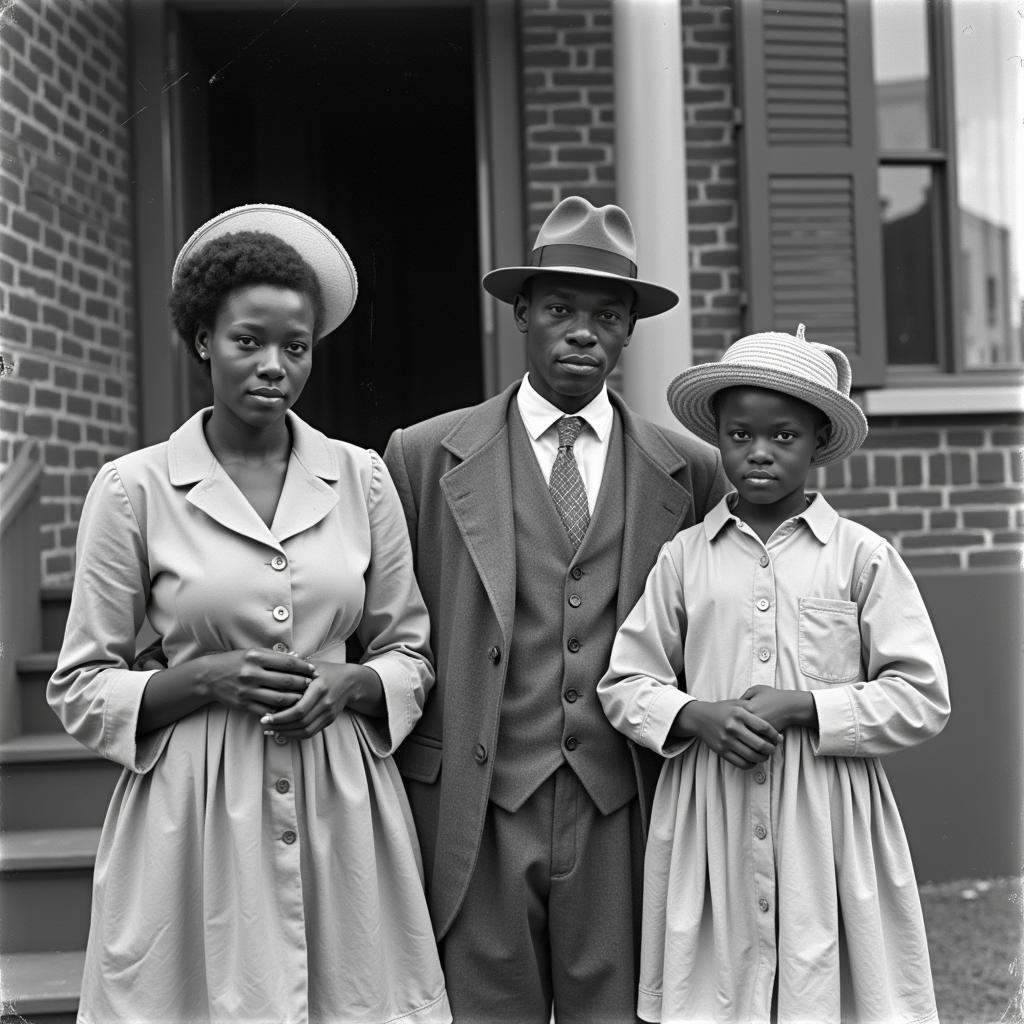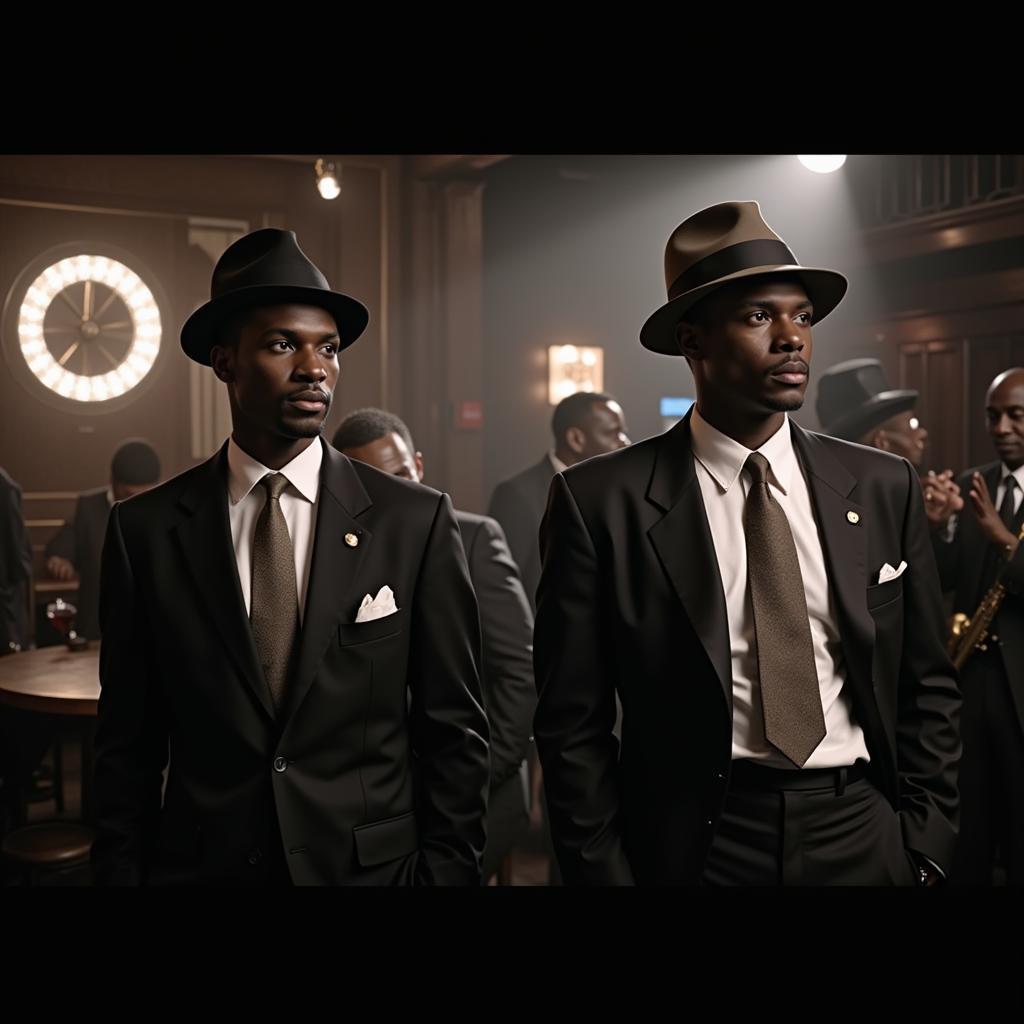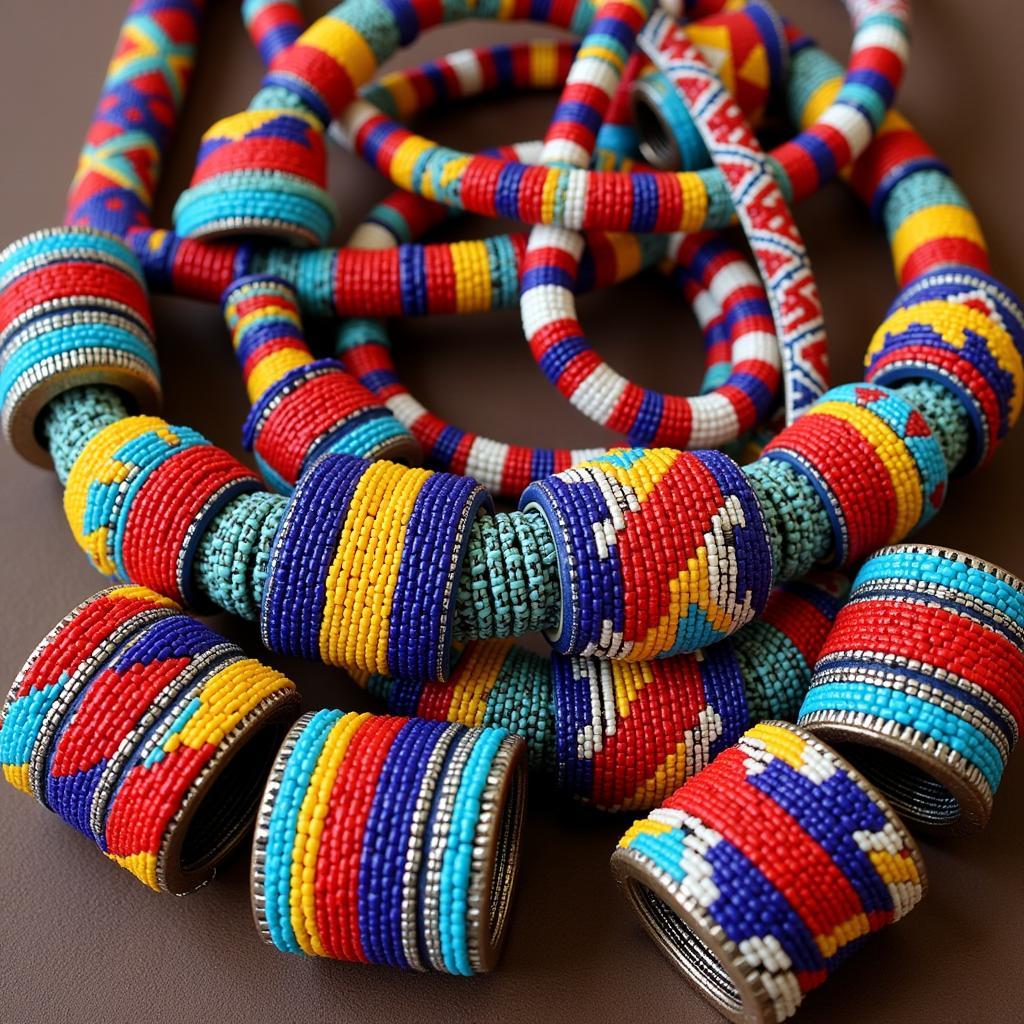African American Fashion 1930s: Style and Innovation in a Complex Era
The 1930s was a period marked by both hardship and cultural dynamism for African Americans. While facing the challenges of the Great Depression and ongoing racial discrimination, Black communities found ways to express themselves through style, forging unique trends that reflected their resilience and cultural identity. This exploration of “African American Fashion 1930s” delves into the distinctive clothing choices, influential figures, and broader social context that shaped this fascinating period in fashion history.
Navigating Style and Scarcity: The Impact of the Great Depression
The economic turmoil of the Great Depression deeply affected fashion trends across all communities, and African Americans were no exception. With limited resources, practicality and resourcefulness became paramount. “Making do” and repurposing existing garments were common practices, showcasing ingenuity and creativity within constraints. Women often refashioned old dresses, adding embellishments or adjusting hemlines to create updated looks. Men, similarly, found ways to extend the life of their clothing, with mending and careful maintenance becoming essential skills.
 African American family during the Great Depression
African American family during the Great Depression
However, even amidst economic hardship, African Americans found ways to infuse their clothing with style and personality. Accessories played a key role in elevating simple outfits, with hats, jewelry, and gloves adding flair and individuality. These small touches not only brightened up everyday wear but also served as expressions of personal identity and cultural pride.
The Rise of Harlem Renaissance Aesthetics
While the Great Depression brought about a sense of practicality, the legacy of the Harlem Renaissance, a period of flourishing Black artistry and cultural expression in the 1920s, continued to influence African American fashion in the 1930s. This influence manifested in the embrace of bold colors, dramatic silhouettes, and a celebration of Black beauty.
Women, in particular, adopted elements of Harlem Renaissance fashion, incorporating flowing fabrics, geometric patterns, and statement accessories into their wardrobes. This era saw the rise of iconic figures like Josephine Baker, whose captivating performances and daring costumes challenged conventional beauty standards and celebrated Black femininity. Baker’s influence extended beyond the stage, inspiring women to embrace bold and glamorous styles.
The Power of Representation: Media, Magazines, and the Shaping of Black Style
The 1930s witnessed a growing presence of African Americans in media, albeit with continued limitations and stereotypical portrayals. Magazines like “Ebony” and “Jet,” which emerged later, would play a crucial role in showcasing Black style and beauty. However, during the 1930s, publications like the “Chicago Defender” and the “Pittsburgh Courier” provided glimpses into fashion trends within Black communities. These newspapers often featured columns dedicated to style advice and showcased the sartorial choices of prominent figures.
“The influence of these publications, though limited in scope compared to mainstream media, cannot be underestimated,” notes Dr. Lillian S. Robinson, fashion historian and author of “Dressed for Freedom: Black Style and the Civil Rights Movement.” “They offered a vital platform for Black designers, models, and everyday individuals to see themselves reflected in the realm of fashion and beauty.”
Men’s Fashion: Sharp Tailoring and the Influence of Jazz
The 1930s saw a shift in men’s fashion as well, with a move away from the loose-fitting styles of the previous decade towards a more tailored silhouette. African American men, influenced by jazz culture and the desire to present a polished and sophisticated image, embraced this trend with enthusiasm.
 African American men in the 1930s at a jazz club
African American men in the 1930s at a jazz club
Double-breasted suits, often in pinstripes or subtle patterns, became a staple for men who sought to make a statement with their attire. Hats, particularly fedoras, remained an integral part of the ensemble, adding an air of mystery and sophistication. The influence of jazz musicians like Cab Calloway and Duke Ellington was undeniable, with their flamboyant stage presence and impeccable style inspiring a generation of Black men.
Conclusion: A Legacy of Innovation and Resilience
African American fashion in the 1930s reflected a complex interplay of social, economic, and cultural factors. Faced with adversity, Black communities utilized fashion as a means of self-expression, empowerment, and cultural preservation. From the resourceful adaptations of the Great Depression era to the enduring influence of the Harlem Renaissance and the emerging visibility in media, African American fashion in the 1930s left an indelible mark on the world of style. It serves as a testament to the enduring human spirit and the power of fashion to reflect and reshape cultural identity.



